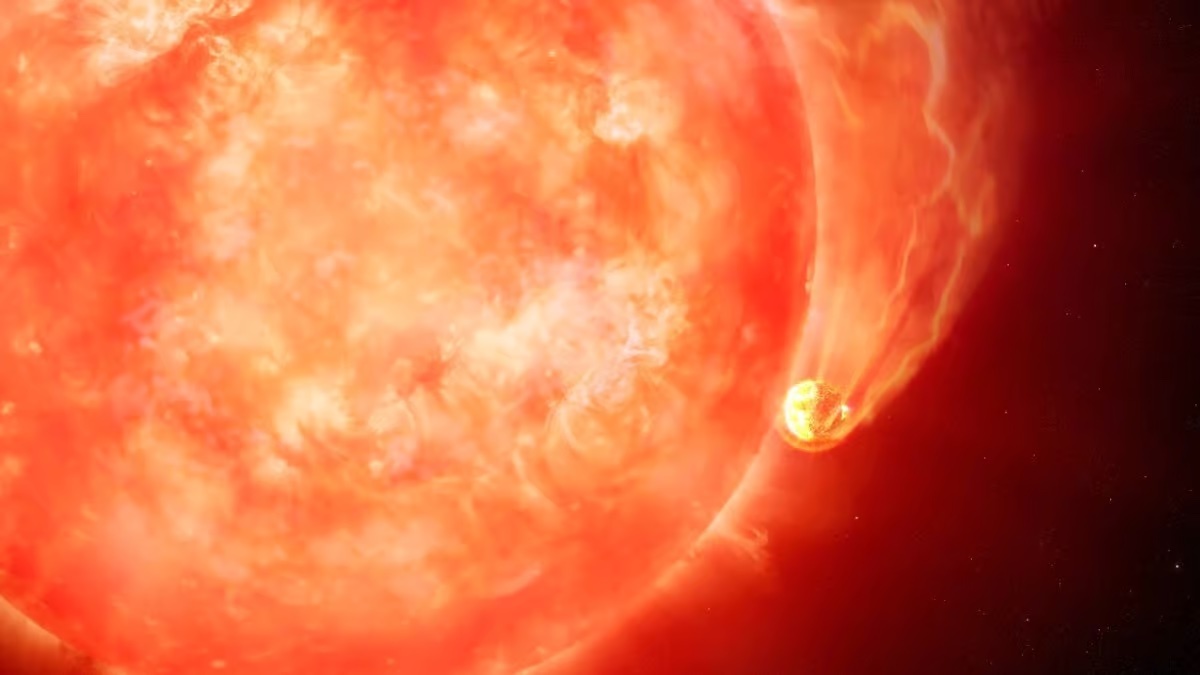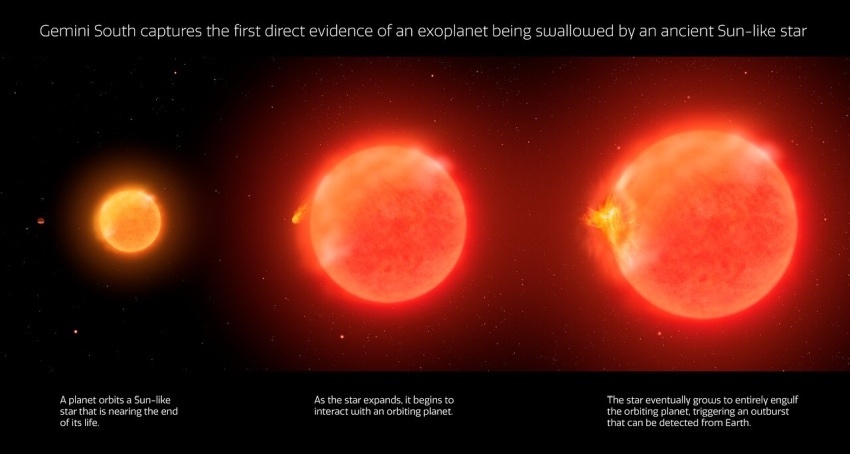5.05.2023

Artist's impression. Astronomers have captured a star in the act of engulfing a planet. Credit: International Gemini Observatory/NOIRLab/NSF/AURA/M. Garlick/M. Zamani
Astronomers have observed a dying star engulfing a planet for the first time. It’s something that’s likely to happen to Earth in a few billion years.
While the precursors and after-effects of stars engulfing planets have been observed before, this is the first time a star’s been caught sucking in a planet that strayed too close.
This happens when Sun-like stars get old, expanding in size until they’ve engulfed planets in their star systems.
It’s estimated to only happen a few times a year in the Milky Way, making it a difficult to observe.
The researchers who have just published their observation in Nature, first spotted the evidence of planetary engulfment in May 2020, when they saw a bright flash on a star 12,000 light-years away, in the Aquila constellation.
They were looking for flashes from stellar binaries with data from the Zwicky Transient Facility (ZTF).
Binary star systems occasionally get brighter, as mass from one star is pulled into the other.
“One night, I noticed a star that brightened by a factor of 100 over the course of a week, out of nowhere,” says lead author Dr Kishalay De, a researcher at Massachusetts Institute of Technology (MIT), US.
“It was unlike any stellar outburst I had seen in my life.”
When he cross-referenced this data against observations from the Keck Observatory in Hawaii, De couldn’t find any of the tell-tale chemical signatures that binary eruptions normally give off.
Next, the researchers looked at infrared data from the Palomar Observatory.
“That infrared data made me fall off my chair,” says De.
“The source was insanely bright in the near-infrared.”
This could have indicated that the flash was a red nova – an explosion from two merging stars.
But data from NASA’s infrared space telescope, NEOWISE, showed that the explosion was too small – about one thousandth the size of even a small stellar merger.
“That means that whatever merged with the star has to be 1,000 times smaller than any other star we’ve seen,” says De.
“And it’s a happy coincidence that the mass of Jupiter is about 1/1,000 the mass of the sun. That’s when we realized: This was a planet, crashing into its star.”
Stars like our Sun turn hydrogen into helium in their cores – until they get to old age, when the hydrogen runs out. At this point, helium starts fusing into carbon, and the outer layers of the star expand outwards and glow red as they get cooler. This engulf planets in the inner star system – and when a planet is engulfed, it triggers a flashy outburst of energy and material. Credit: International Gemini Observatory/NOIRLab/NSF/AURA/P. Marenfeld
The researchers believe that the planet was between about one and 10 times the mass of Jupiter.
The initial flash from the planet’s engulfment lasted 10 days, followed by 100 days of a bright infrared emission caused by the engulfing star ejecting material.
“I think there’s something pretty remarkable about these results that speaks to the transience of our existence,” says co-author Dr Ryan Lau, an astronomer at the US National Science Foundation’s NOIRLab.
“After the billions of years that span the lifetime of our Solar System, our own end stages will likely conclude in a final flash that lasts only a few months.”
Quelle: COSMOS

